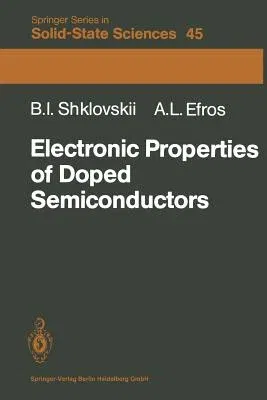B I Shklovskii
(Author)Electronic Properties of Doped Semiconductors (Softcover Reprint of the Original 1st 1984)Paperback - Softcover Reprint of the Original 1st 1984, 8 December 2012

Qty
1
Turbo
Ships in 2 - 3 days
In Stock
Free Delivery
Cash on Delivery
15 Days
Free Returns
Secure Checkout
Part of Series
Springer Solid-State Sciences
Part of Series
Springer Series in Solid-State Sciences
Print Length
388 pages
Language
English
Publisher
Springer
Date Published
8 Dec 2012
ISBN-10
3662024055
ISBN-13
9783662024058
Description
Product Details
Authors:
Book Edition:
Softcover Reprint of the Original 1st 1984
Book Format:
Paperback
Country of Origin:
NL
Date Published:
8 December 2012
Dimensions:
23.39 x
15.6 x
2.13 cm
ISBN-10:
3662024055
ISBN-13:
9783662024058
Language:
English
Location:
Berlin, Heidelberg
Pages:
388
Publisher:
Weight:
571.53 gm

